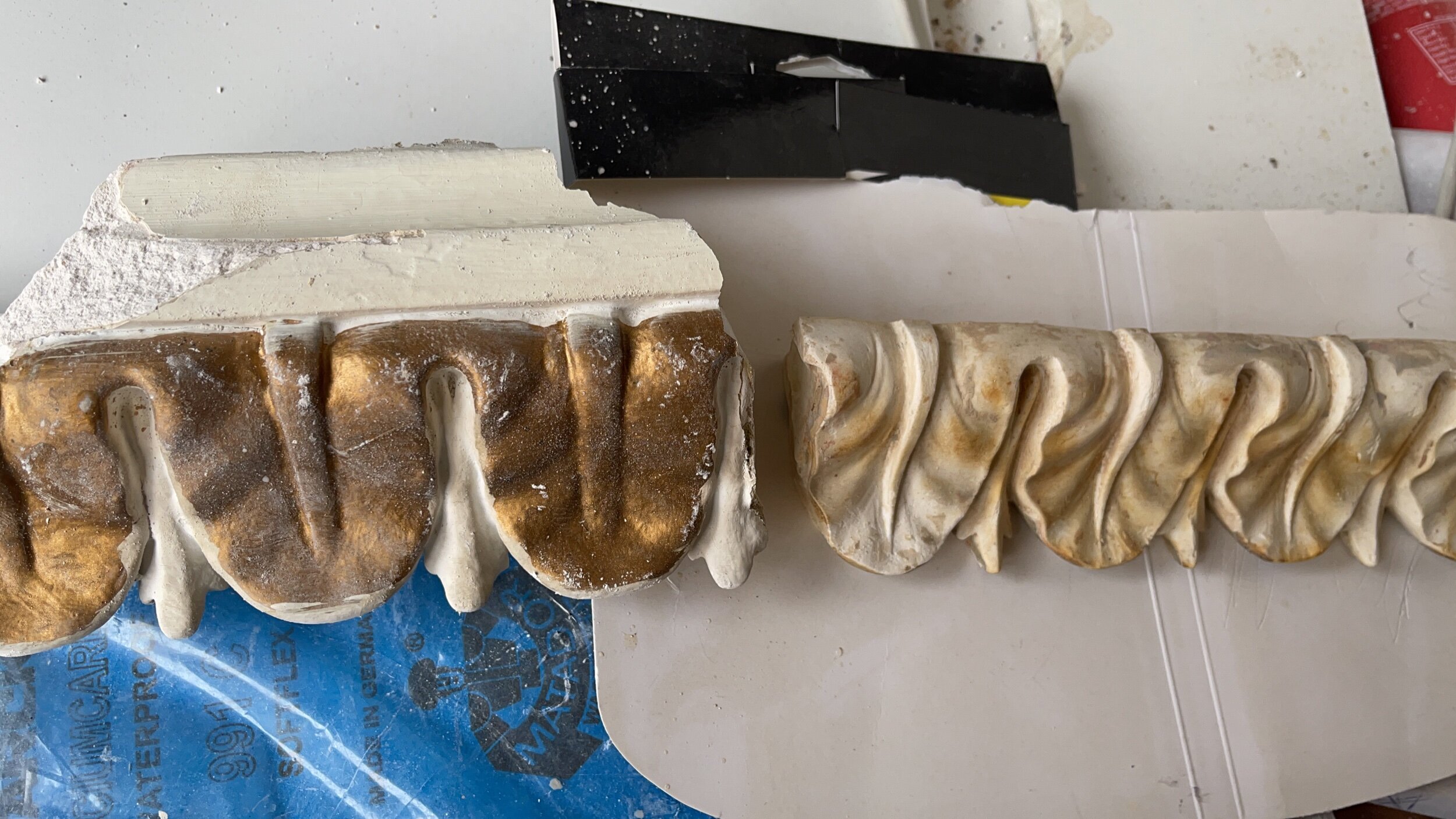An Introduction to Cornice Mouldings
Cornice mouldings add an elegant touch to any home. They are made of plaster and used to conceal the joint between ceiling and wall, so cracks don't become visible. You'll find examples of cornicing in Georgian, Victorian and Edwardian homes and high-specification modern buildings.
Cornice mouldings add an elegant touch to any home. They are made of plaster and used to conceal the joint between ceiling and wall, so cracks don't become visible. You'll find examples of cornicing in Georgian, Victorian and Edwardian homes and high-specification modern buildings.
A cornice not only adds decoration, but also brightens a room by reflecting light into areas of shadow, and gives the illusion of a room being larger by drawing the eye upwards.
It will also provide a pleasing symmetry, mirroring the skirting board at the bottom of the wall.
You may hear the word 'coving' being used interchangeably with cornice. Coving tends to be a simpler, more regular design, whereas cornice is often very ornate.
Types of Cornice Moulding
Since the beginning of the 18th Century, homeowners have been adding cornicing to rooms of all shapes and sizes.
The age of the moulding can often be identified by the intricacy of the design. Georgian and early Victorian designs tend to be more ornate than Edwardian.
You may hear the word 'coving' being used interchangeably with cornice. Coving is a simpler, more regular design. Many new homes will be fitted with clean, modest coving.
However, if you really want to create some opulence and refinement, there are hundreds of off-the-shelf designs of cornicing to choose from, featuring decorations from swags and flowers to regimented flutes.
Restoration and Repair
After the Second World War, British interior design underwent a huge transformation. Homeowners began to modernise and simplify, stripping out architectural features. Many beautiful mouldings were destroyed, and lots of homes were left without their original character.
Fortunately, interior design trends have shifted again and the restoration and recreation of original features is now a priority.
There is a range of very specialist methods and materials used to return internal plaster decorations to their former glory. Experts can create moulds to create yards and yards of curved or straight cornice in a bespoke design, or they can touch up chipped or damaged cornice and prepare it to last for centuries to come.
Our Recent Work
Bespoke Georgian Cornice for a beautiful family home in the Lincolnshire Wolds. Tricky but so very satisfying.
The creation of an ornate rose mould to produce a multitude of flowers to decorate a true restoration project - a Grade 2 listed Georgian home in North Lincolnshire.
For a more contemporary home - some super-sleek art deco cornice.
The restoration of some of the most beautiful cornice we've ever seen in an iconic Yorkshire seaside hotel. It had been water damaged, but we brought it back to life - even though it was 5 metres from the ground!
Curved Cornice, Lambert Road, Grimsby
You may wonder if there’s curved cornice (coving) that would need to go up if you have curved wall?
We can offer this option, no problem!
See below on with one of our jobs which leaves customer over the moon in Grimsby.
Large Ornate Cornice coving repairs at Royal Hotel Scarborough
The Project
We have won the project to restore large ornate cornice (proper term for coving) at Royal Hotel Scarborough at Scarborough, North Yorkshire as the room is served as for weddings , overlooking to the beach. Ceiling is 4.7 meters high. See below the progression pictures of affected sections where got damaged from water ingress from above. #scarborough #cornice #coving #repairs #northyorkshire #ornate #plaster
Royal Hotel Scarborough- damaged cornice coving
Boards hiding the water damaged section of cornice coving
Chopped down bad section of water damaged cornice
Salvaged the enrichments (patterns) to be reproduced at the workshop
Floral enrichment cleaned off layers of paint - prep prior making new rubber mould
Paint removal reveal more details - quite an difference !
New meets old - cornice (coving) repairs in Scarborough
Cornice (coving) resorated
The Results
Great to see our repair being painted. Very tall ceiling !
Corner section of cornice (coving) repaired at Royal Hotel Scarborough.
Cornice coving repairs in Pocklington, York
Works in progress in Pocklington - cornice (proper name for coving ) got damaged by water ingress so it needs replacing. Ran cast (due to undercuts) and fit up.




























